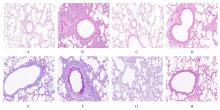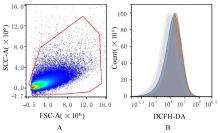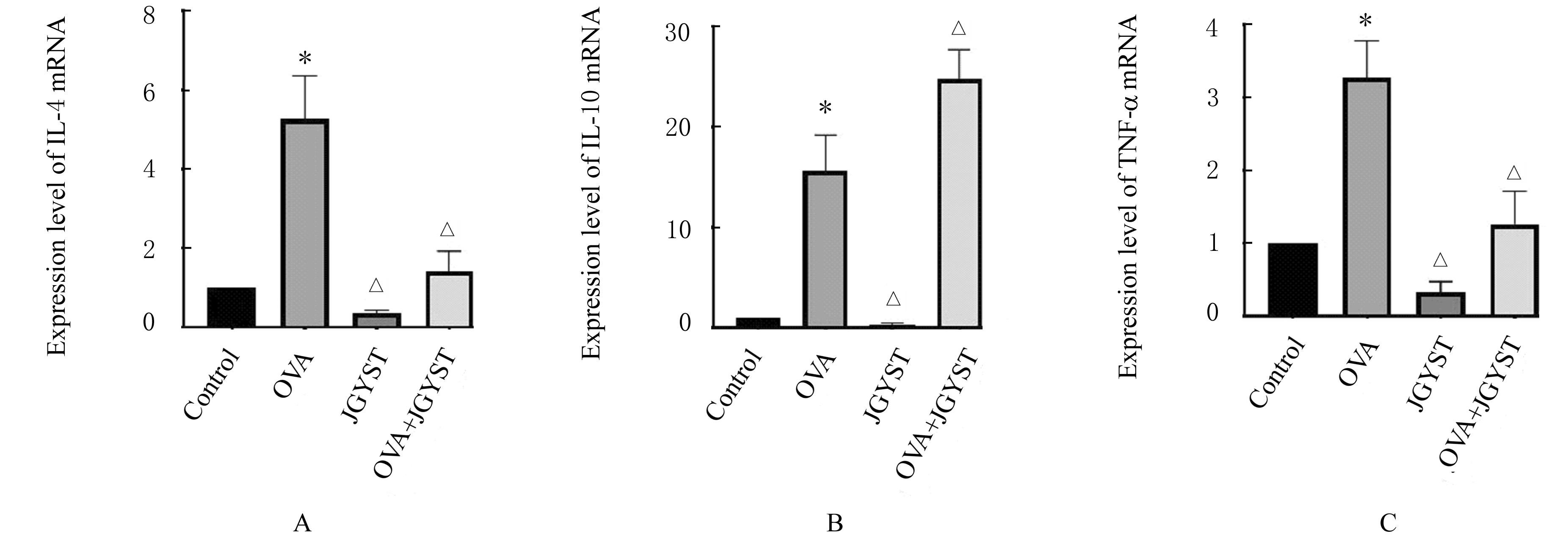| 1 |
王 鹏. 支气管哮喘药物治疗现状及进展分析[J]. 实用中西医结合临床, 2018, 18(3): 176-177.
|
| 2 |
杜文元. 元参桔梗饮治疗小儿化脓性扁桃体炎25例报告[J]. 内蒙古医学杂志, 2009, 41(S2): 81.
|
| 3 |
高健美, 申 茹, 徐英辉. 桔梗元参汤对变应性鼻炎小鼠行为学和p38MAPK/COX-2信号转导通路的影响[J]. 中药药理与临床, 2014, 30(1): 11-13.
|
| 4 |
张语珉. 桔梗玄参汤合千层纸汤治疗急性咽炎性咳嗽的临床疗效观察[J]. 中医临床研究, 2018, 10(8): 26-27, 29.
|
| 5 |
陈晓薇, 程 桯. 桔梗元参汤治疗急性上呼吸道感染临床疗效观察[J]. 深圳中西医结合杂志, 2020, 30(7): 61-62.
|
| 6 |
ZHANG Y, TANG H M, YUAN X F, et al. TGF-β3 promotes MUC5AC hyper-expression by modulating autophagy pathway in airway epithelium[J]. EBioMedicine, 2018, 33: 242-252.
|
| 7 |
SUZAKI Y, HAMADA K, NOMI T, et al. A small-molecule compound targeting CCR5 and CXCR3 prevents airway hyperresponsiveness and inflammation[J]. Eur Respir J, 2008, 31(4): 783-789.
|
| 8 |
XUE L N, LI C, GE G B, et al. Jia-Wei-yu-ping-Feng-San attenuates group 2 innate lymphoid cell-mediated airway inflammation in allergic asthma[J]. Front Pharmacol, 2021, 12: 703724.
|
| 9 |
隋博文, 王 达, 翟平平, 等. 射干麻黄汤对哮喘小鼠气道重塑及Th17/CD4+CD25+ Treg细胞的影响及机制研究[J]. 中国中医急症, 2017, 26(2): 204-207.
|
| 10 |
朱立成, 尚云飞, 姜水菊. 小青龙颗粒对支气管哮喘患者外周血Th17/Treg平衡影响的研究[J]. 现代中西医结合杂志, 2012, 21(20): 2173-2174, 2176.
|
| 11 |
刘新生, 达春水, 程 科. 麻杏二陈三子汤对小儿哮喘急性发作的疗效及其对免疫机制的影响[J]. 世界中医药, 2017, 12(10): 2389-2392.
|
| 12 |
ZHAO S M, WANG H S, ZHANG C, et al. Repeated herbal acupoint sticking relieved the recurrence of allergic asthma by regulating the Th1/Th2 cell balance in the peripheral blood[J]. Biomed Res Int, 2020, 2020: 1879640.
|
| 13 |
CHEN X, LIU H, PENG Y M, et al. Expression and correlation analysis of IL-4, IFN-γ and FcαRI in tonsillar mononuclear cells in patients with IgA nephropathy[J]. Cell Immunol, 2014, 289(1/2): 70-75.
|
| 14 |
HAMMAD H, LAMBRECHT B N. The basic immunology of asthma[J]. Cell, 2021, 184(9): 2521-2522.
|
| 15 |
LEÓN B, BALLESTEROS-TATO A. Modulating Th2 cell immunity for the treatment of asthma[J]. Front Immunol, 2021, 12: 637948.
|
| 16 |
KUPERMAN D A, HUANG X Z, KOTH L L, et al. Direct effects of interleukin-13 on epithelial cells cause airway hyperreactivity and mucus overproduction in asthma[J]. Nat Med, 2002, 8(8): 885-889.
|
| 17 |
SCHUIJS M J, HAMMAD H, LAMBRECHT B N. Professional and ‘amateur’ antigen-presenting cells in type 2 immunity[J].Trends Immunol,2019,40(1):22-34.
|
| 18 |
FINOTTO S. Resolution of allergic asthma[J]. Semin Immunopathol, 2019, 41(6): 665-674.
|
| 19 |
MORIANOS I, SEMITEKOLOU M. Dendritic cells: critical regulators of allergic asthma[J]. Int J Mol Sci, 2020, 21(21): 7930.
|
| 20 |
NAKANO H, FREE M E, WHITEHEAD G S, et al. Pulmonary CD103(+) dendritic cells prime Th2 responses to inhaled allergens[J]. Mucosal Immunol, 2012, 5(1): 53-65.
|
| 21 |
FEAR V S, LAI S P, ZOSKY G R,et al. A pathogenic role for the integrin CD103 in experimental allergic airways disease[J]. Physiol Rep, 2016, 4(21): e13021.
|
| 22 |
GUPTA N, VERMA K, NALLA S, et al. Free radicals as a double-edged sword: the cancer preventive and therapeutic roles of curcumin[J]. Molecules, 2020, 25(22): 5390.
|
| 23 |
DOZOR A J. The role of oxidative stress in the pathogenesis and treatment of asthma[J]. Ann N Y Acad Sci, 2010, 1203: 133-137.
|
| 24 |
高健美, 夏昌英, 雷 鸣, 等. 基于细胞凋亡研究桔梗元参汤含药血清对炎性气道黏液高分泌的抑制作用[J]. 中药药理与临床, 2015, 31(3): 8-11.
|
| 25 |
BRIGHTLING C, BERRY M, AMRANI Y. Targeting TNF-alpha: a novel therapeutic approach for asthma[J]. J Allergy Clin Immunol,2008,121(1): 5-10.
|
| 26 |
LEE E, LEE S Y, PARK M J, et al. TNF-α (rs1800629) polymorphism modifies the effect of sensitization to house dust mite on asthma and bronchial hyperresponsiveness in children[J]. Exp Mol Pathol, 2020, 115: 104467.
|
| 27 |
MATSUDA M, INABA M, HAMAGUCHI J, et al. Local IL-10 replacement therapy was effective for steroid-insensitive asthma in mice[J]. Int Immunopharmacol, 2022, 110: 109037.
|
| 28 |
向小琴, 张婷婷, 钟江姗,等. 短链脂肪酸对脂多糖诱导的大鼠急性呼吸窘迫综合征的影响及其作用机制[J].解放军医学杂志,2022,47(6): 561-568.
|
 )
)






